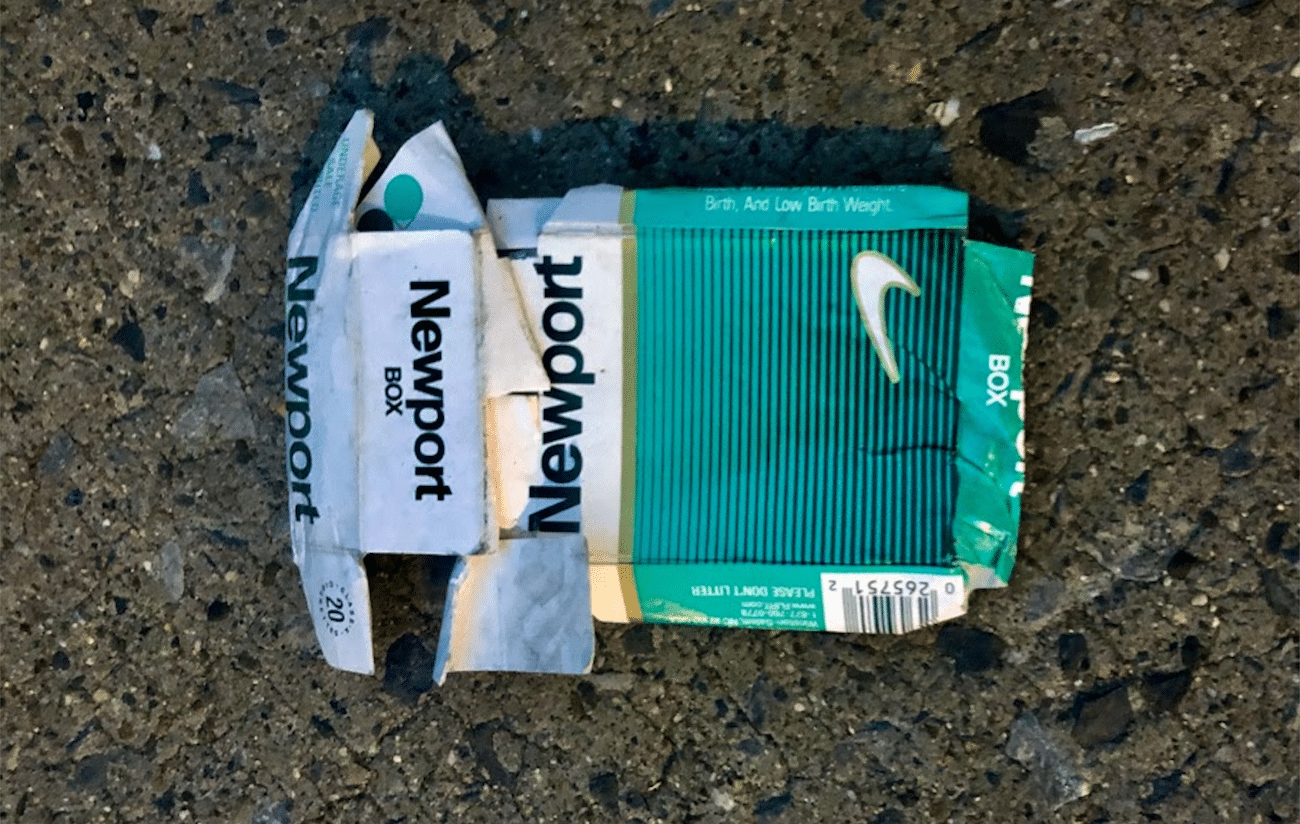Last year, California voters passed Proposition 31—banning the retail sale of flavored tobacco and vaping products, including menthol. Overnight, one-third of the Golden State’s nicotine consumers were left with a stark choice: quitting their preferred products or seeking them through the illicit market.
New data suggest it’s pretty clear which way they went. And it should make sobering reading for the Food and Drug Administration, which presses on with its plan for a national menthol cigarettes ban while refusing to authorize any menthol (or flavored) vaping products.
A recent study analyzed discarded cigarette packs and vape packaging collected from streets and public trash cans in 10 Californian cities. The research was conducted by the WSPM Group, an independent firm that was commissioned by tobacco giant Altria.
These thousands of products cannot legally be bought from retailers in the state, yet their presence demonstrates that the ban has done little to reduce demand.
Between May 1 and June 28 of this year, the researchers collected 15,000 cigarette packs and more than 4,500 vaping product packages. They found that 21.1 percent of the cigarette packs were for either menthol or menthol work-around products (marketed to menthol users, with similar packaging but non-menthol descriptors). Meanwhile nearly all (97.9 percent) of the vaping products were flavored.
These thousands of products cannot legally be bought from retailers in the state, yet their presence demonstrates that the ban has done little to reduce demand. Prior to the ban, menthol cigarettes made up 24.5 percent of the state’s total cigarette sales. The discarded packs study showed a reduction in menthol prevalence of just 13.9 percent.
One key objection to the FDA’s proposed national ban is the inevitability of the criminalization of local suppliers, likely to be concentrated in communities of color that disproportionately smoke menthols. California’s experience confirms that menthols won’t go away, and that the threat is real.
There are implications for public finances, too. When people can’t legally buy flavored nicotine products in California but are obtaining them anyway, that hits tax revenues and public services in a state facing soaring budget deficits. Annual revenues will fall by over $300 million, according to one estimate.
In the study, of more than 11,000 packs for which tax origin could be determined, less than half (45 percent) were from California. And in a clear indication of the outcome of a national menthols ban, more than one-quarter (27.6 percent) were of non-domestic cigarettes, intended for sale in markets outside the United States.
What’s more, cigarette packs without the cellophane covers were not included among the tax-determinable packs. Researchers noted that smugglers often remove the cellophane “to hide the origin of the pack and avoid paying taxes.”
Of course, some people will dismiss this study on the basis that it was commissioned by Altria. But its findings match everything we know about drug prohibition, and the existence of huge illicit markets for cigarettes and vapes in the US is not in doubt.
Estimates of the proportion of national cigarette sales represented by the illicit market range as high as 21 percent—billions of packs annually. But it’s a great deal higher in California. For 2021, the Mackinac Center for Public Policy estimates that 44 percent of cigarette packs in California were not legally purchased in the state—second only to New York. How much higher might it be now, in the wake of the ban?
Back in 2017, the US Government Accountability Office reported numerous schemes in which cigarettes are purchased at duty-free stores along the southwest border and brought into the US, either directly or via Mexico, without being declared to Customs and Border Protection. And in 2022, before California’s ban, organized groups in Mexico normally concerned with trafficking other drugs were reportedly muscling into the illicit cigarette trade, and committing human rights abuses to control the market.
What is all this for? Californians are still smoking menthols in large numbers, and the state’s overall situation has worsened.
Enforcement follows, as we have seen over and over and over again with unregulated cigarettes in California, long before Prop. 31 made many more of them illegal.
States far away have meanwhile reported record-breaking seizures of illicit cigarettes this year. In early October, Arkansas state police seized over 3,200 cartons of untaxed cigarettes; the majority were mentholated.
And what is all this for? Californians are still smoking menthols in large numbers, and the state’s overall situation has worsened.
As many past lessons have taught us, banning substances doesn’t end demand. It simply shifts them from a regulated marketplace with oversight to one that doesn’t pay taxes, doesn’t impose product standards and doesn’t check ID.
This is all the more exasperating when in the nicotine field, we have an obvious, positive alternative to prohibition, using the carrot and not the stick.
Instead of banning anything, we could support the availability of a wide range of non-combustible harm reduction options: vapes, snus and heated tobacco products. We could allow the full range of flavors that are important to adults switching from cigarettes. We could use taxation to incentivize harm reduction purchases over the cigarettes that kill. And health authorities could promote these options as the lifesaving alternatives that they are, as happens in other countries.
But this is the United States, and banning things seems to be what we do.
Photograph by Helen Redmond
The Influence Foundation, which operates Filter, has received grants from Altria. Filter’s Editorial Independence Policy applies.





Show Comments